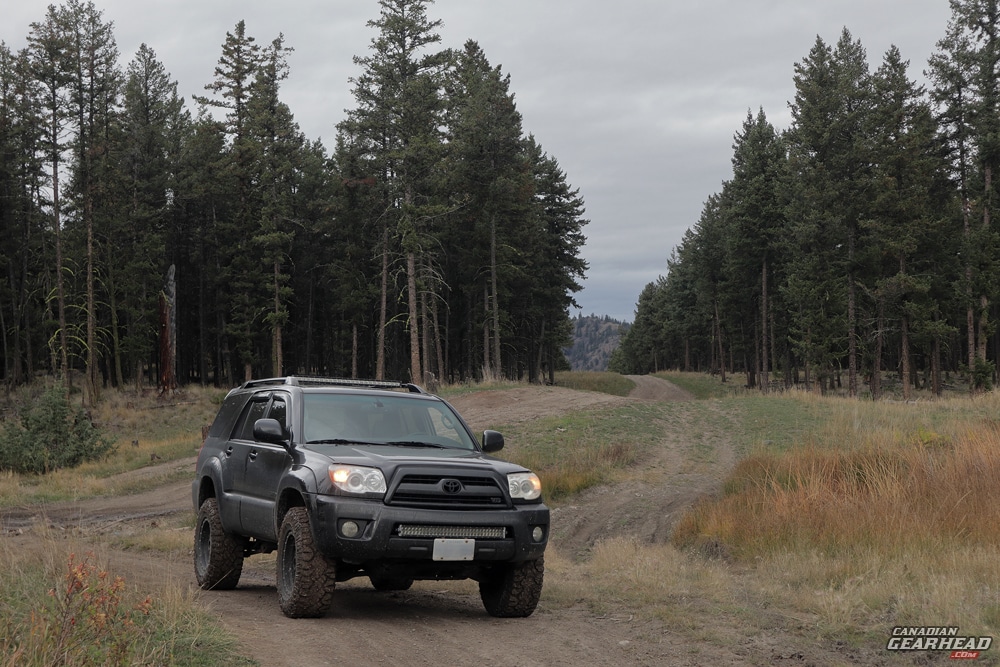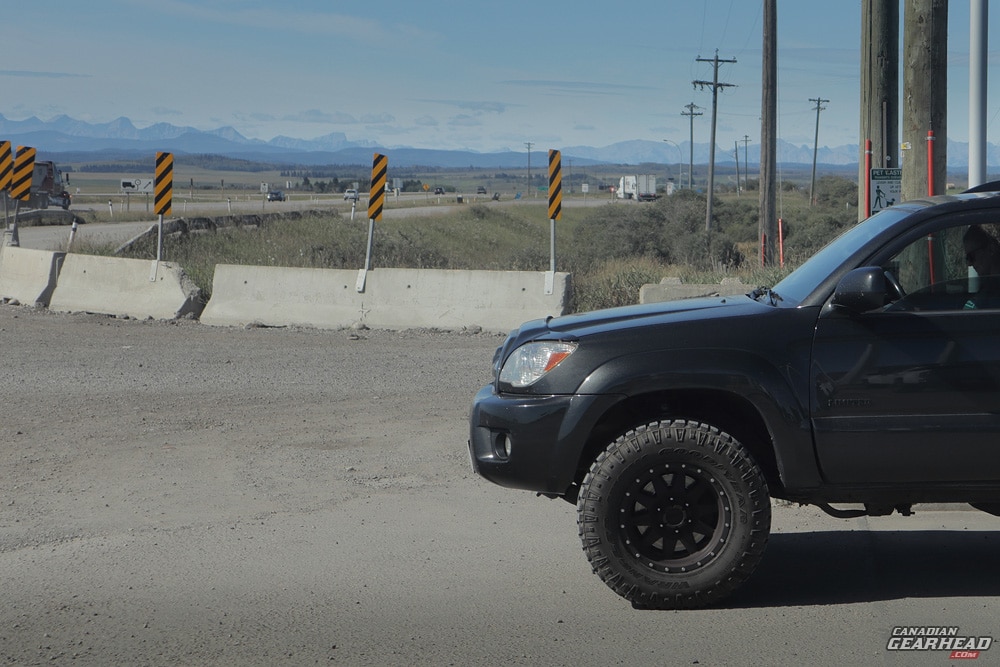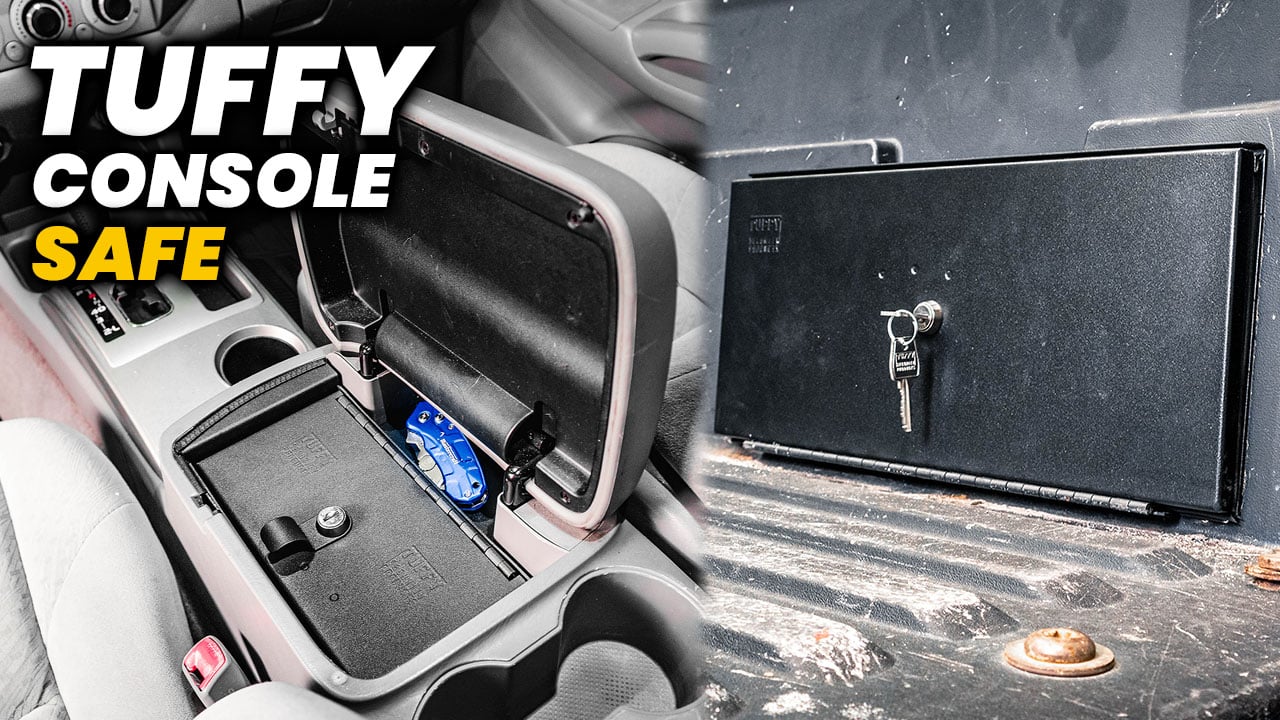Maybe it’s out of laziness, maybe it just makes things seem fancier. Toyota loves coming up with abbreviations for the features on their vehicles. They can be confusing though.
Stuck trying to figure out what one of them stands for? I’m going to explain some of the popular 4runner off-road features here. We’re going to discuss KDSS, A-TRAC, X-REAS, DAC, and RSCA in this article.
What does KDSS mean?
Toyota’s KDSS stands for Kinetic Dynamic Suspension System. It allows the 4runner’s sway bars to flex when the vehicle is off-road. Normally, a sway bar will improve cornering on the street but decrease suspension travel. KDSS provides the best of both worlds.
Sway bars are very helpful on the road when it comes to reducing body roll and improving cornering. This same rigidity works against you when you’re off-road though.
One of the first things most off-roaders do when they hit the trail is disconnect their sway bars. This lets the suspension flex a lot more which provides more wheel travel.
More wheel travel means you get better traction and stability on uneven ground. Basically, the axles can flex underneath the vehicle while the body stays relatively flat.

So why not just leave them disconnected? Well, some people do. That usually applies to vehicles that are already heavily modified for off-roading, so their on-road handling is already suffering.
Sway bars can be very helpful when it comes to on-road handling and cornering. They keep the vehicle much more planted and reduce the risk of rollover.
Products like these “quick disconnects” from JKS have become very popular among Jeep owners because of their ability to use the sway bars on-road but disengage them when off-roading.
They replace the factory sway bar end links with ones with a removable pin that allows you to easily disengage the sway bar.
Disconnecting your sway bars manually every time you hit the dirt can be annoying. Manufacturers have come to the rescue by offering electronic sway bar disconnects on vehicles like the Wrangler Rubicon and Ram Power Wagon.
What does KDSS do?
Toyota’s solution is KDSS. It gives you the best of both worlds. When you’re driving off-road, it lets the sway bar flex up and down on little shock absorbers so your wheel travel isn’t as limited. When you’re driving on-road, those shock absorbers are locked out, allowing the system to function like a traditional sway bar.
Which Toyotas have KDSS
Toyota offered KDSS on the following vehicles:
Is KDSS worth it?
Most owners that have driven 4runners with and without KDSS claim that it makes a noticeable difference. With that said, upgrading the suspension with high-quality coilovers will provide similar characteristics, making the KDSS no longer helpful if you plan to go that route.
KDSS adds an extra point of potential failure in the suspension system. Some owners have reported fluid leaks (even at low mileage) and it can be very expensive to fix. These problems don’t appear to be very common though.
If you plan to keep your suspension stock, KDSS can provide a better ride both on and off-road.

What does A-TRAC do?
Toyota’s A-TRAC (“Active Traction Control”) is an electronic system that simulates a traditional Limited Slip Differential. Instead of a mechanical locking mechanism in the differential, it uses the anti-lock brake system to slow down the wheels that are spinning so the others can gain traction.
In a way, A-TRAC isn’t a system itself – it just controls the existing ABS system in a way that finds traction much like an LSD. All of the ABS sensors are already there, they’re just being used for a different purpose.
If a wheel loses traction, A-TRAC will limit wheel spin by applying the brakes to that wheel. This will allow the power to go to other wheels that do have traction.
A big benefit that a system like A-TRAC has over a traditional locking differential is that it puts much less strain on the axle. Less strain means less wear or potential for breakage. And as we know, Toyota is all about dependability.
Is A-TRAC always on?
On vehicles like the 4th gen 4runner, A-TRAC is always on. On others like the Tacoma and FJ Cruiser, you have more control over whether it’s turned on or off.

What is the X-REAS system?
X-REAS stands for “Cross-Linked Relative Absorber System”. It connects the shock absorbers with their diagonal counterpart (front left to rear right, front right to rear left). It takes fluid away from the shock with the least impact and delivers extra to the one taking a big impact.
How do you know if you have X-REAS?
It’s pretty easy to do a visual check to see if your 4runner is equipped with X-REAS. There will be a pump mounted on the side of both frame rails near the center of the vehicle. You’ll be able to see hydraulic lines running from each shock, down the frame rail, through the pump, and to the opposite shock.
The downsides of X-REAS
4runners equipped with X-REAS do indeed handle a bit better than ones without. But similar to the KDSS system, upgrading to high-end coilovers will offer better results in terms of handling and nose-dive under braking.
As with any other suspension system, it’s going to wear out eventually and need to be replaced. The problem with X-REAS is that the system cannot be bled. Both opposing shocks need to be ordered and replaced together.
Toyota will often recommend replacing the entire system at once which will cost thousands. At a minimum, you’ll be replacing 2 at a time (and only with OEM X-REAS shocks from Toyota).
Can you get rid of X-REAS?
Good news! If your X-REAS system is worn out or you want to upgrade to an aftermarket suspension system, it can be removed from your 4runner.
You’ll have to replace all 4 shocks with aftermarket parts. The remaining lines and pumps can be removed from the frame rails if you want, otherwise you can plug them and tie them up.
I replaced the X-REAS on my 4runner with a set of Fox 2.0 front coilovers and matching rear shocks. In my experience, the Fox suspension performs better in every way, including on-road handling.
I’ve never regretted deleting the X-REAS system once.
Can you lift a 4runner with X-REAS?
It’s possible to lift your 4runner while retaining the X-REAS system. Unfortunately, you can only do so using a spacer lift and keeping the original X-REAS shocks. That means you won’t be able to change the way your 4runner rides and handles, only gain some ground/tire clearance.
You can lift an X-REAS equipped 4runner with a spacer lift like this one from Daystar.

What is the DAC button in a Toyota 4runner?
DAC stands for Downhill Assist Control. This is a system that allows your 4runner to maintain a speed of no more than 3 MPH when descending down a hill. You can keep your foot off the brake pedal completely and you’ll continue to travel slowly down a steep hill.
How do I activate my DAC?
Toyota’s DAC will only engage if you are in 4lo, 1st gear, and traveling less than 25 km/h. All you have to do is press the DAC button and the green DAC light will come on in your dash to indicate that the system is turned on.
When to use DAC
Downhill Assist Control should only be used on steep descents. You might find that it isn’t very helpful – most of your control comes from the fact that you’re in 4lo and not necessarily from the DAC.
The engine braking combined with such low gearing is usually enough to keep you rolling at a slow speed. Many 4runner owners won’t bother to use the DAC system.

What is the RSCA button on a Toyota 4runner?
RSCA stands for “Roll Sensing Curtain Airbags”. The 4runner has curtain airbags that are programmed to go off in the event of a roll-over crash. You may find yourself leaning on some pretty steep slopes while off-roading so pressing this button shuts them off to avoid accidental deployment.
It can be hard to remember to use this feature every time you end up off-road but it’s a good idea. Some trails can really rattle you around and the last thing you need is to get hit with an airbag upside the head.

What does the VSC light mean in a Toyota 4runner?
VSC stands for “Vehicle Stability Control”. This feature is meant to help you maintain control in slippery situations. It will use your 4runner’s traction control and ABS systems to attempt to keep the vehicle sure-footed and avoid sliding.
When the VSC system engages to keep you from sliding, the light will flash in the dash. This just tells you that it’s working.
The VSC Off light comes on in the dash whenever you turn the system off manually or you have a check engine light due to a diagnostic trouble code. It’ll typically be turned off with the check engine light when you clear the code.
4Runner Off-road final thoughts
Hopefully, this has helped to answer any questions you might have had about the off-road features on the Toyota 4runner. These vehicles are very capable off-road, even in stock form – you just need to know how these systems help the 4runner and when to use them.
Make sure to check out this article to find out how and when to engage 4 wheel drive.

Tim is the creator of Canadian Gearhead. His experience with auto detailing and working for Toyota shows through all of the articles posted here. He runs the Canadian Gearhead site and YouTube channel full-time now and currently owns a 2007 4runner, 2006 Tacoma, and 1991 MR2. Read more about Tim:





Leave a Reply